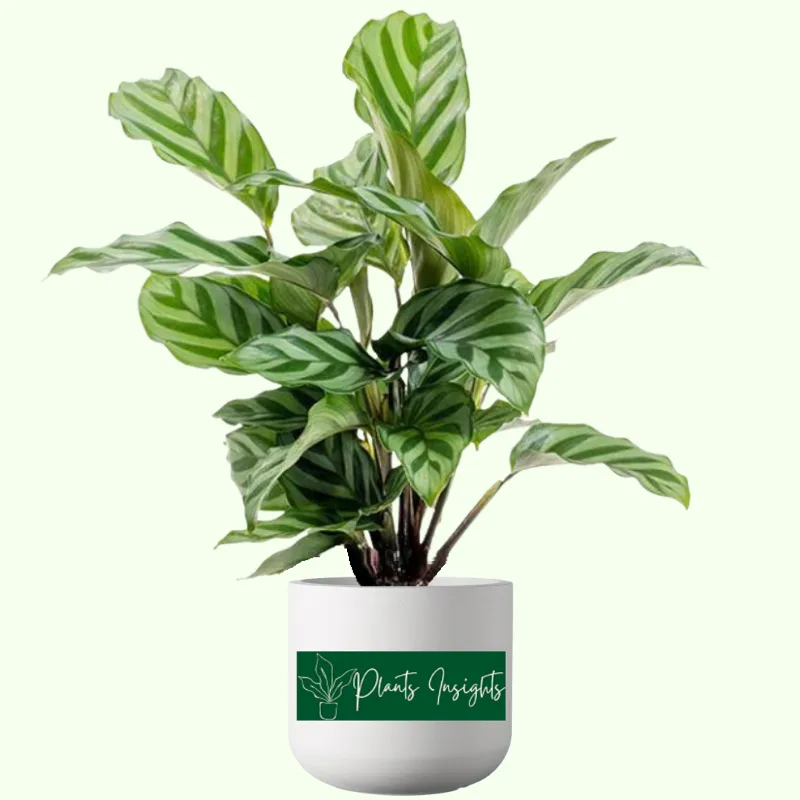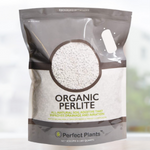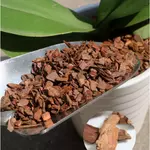This plant is for all gardeners who want a new plant in their plant collection that is easy to take care of and brightens your living space. The Calathea Freddie can become a gem of your garden because of its beautiful leaves spreading out in all directions. It is a member of the Marantaceae family, also known as the Zebra plant, due to stripy leaves.
The plant is sometimes mistaken as Calathea Leopardina ; however, Freddie leaves have a special touch and can be easily differentiated from other species. Freddie Calathea grows up a couple of feet tall and produces white color blooms.
Prominent Family Members: Calathea Vittata, Calathea Musaica, Calathea Crocata, Calathea Rufibarba, Calathea Ornata, Calathea Orbifolia, Calathea Warscewiczii
Essential Products
How do you care for Calathea Freddie?
Calathea species are picky about their environment. To ensure your plant lives on for a long time, you shall provide the optimum growing conditions to the Calathea Freddie Plant.
The plant belongs to the humid rainforests; therefore, place the Freddie plant in a humid place. The soil mix shall be able to drain perfectly, and the mixture shall not either be too moist or too dry. Water the plant on a schedule, monitoring soil moisture.
My routine is to spray my new plants with Instant Plant Protection tablets before putting it with other plants and it has saved me the trouble of having pest infestation many times over the years.

Does the Calathea Freddie Bloom?
Calathea Freddie blooms indoors rarely, though they are kept in the flowering plant category as they bloom generously in the wild. Flowers bloom in the base of the stalks near the soil and are white. The delicate flowers have heart-shaped white petals emerging from the green sepals. Additionally, flowers are fragrant and will give your house sweet scent if the plant bloom.

Light Requirement for Concinna plant
Exposure to light is a basic necessity of the plant to do photosynthesis and fulfill their growing requirements. Perfect light intensity will keep plant foliage healthier and livelier.
Freddie Calathea plant is inherent to South American rain forests, highly populated with big trees. Smaller plants like Calathea Freddie and Vittata grow under the canopy of these trees. Matching to that environment indoor and outdoor make them flourish. The plant loves medium to bright light for optimal growth.
Therefore, keep the pot where at least six hours of diffused light is present to get healthy and radiant color foliage. The best-displaying spot for Freddie Calathea is three to six feet away from the west, east, or north-facing window. Avoid keeping it in front of the south-facing window to prevent direct sunlight from reaching the plant.
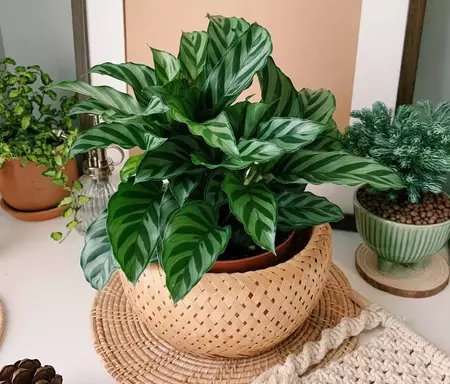
Outdoor, in your lawn, grow it under the shaded tree or make an artificial shade with a shade cloth.
If your Freddie plant leaves start fading and tips become brown, it means the plant is underexposed to high-intensity light; provide it a shade or move it to the medium-light area. The plant will have stunted growth if it is not getting the required light.

Humidity and Temperature for Calathea Freddie
The average rainfall in the Tropical rainforests of Brazil can go up to 300 centimeters; therefore, plants that emerge from that environment need high humidity. Calathea Freddie prefers humidity in the surroundings to be in the range of 50-60 percent for the best growth. It is best to buy a hygrometer to have an exact measure of your home’s indoor humidity.
If the edges and the corners of Freddie’s leaves start to turn brown, lack of humidity can be the main reason for the problem.
Humidity Increasing Methods
Following are the recommendation you can act upon to solve the issue.
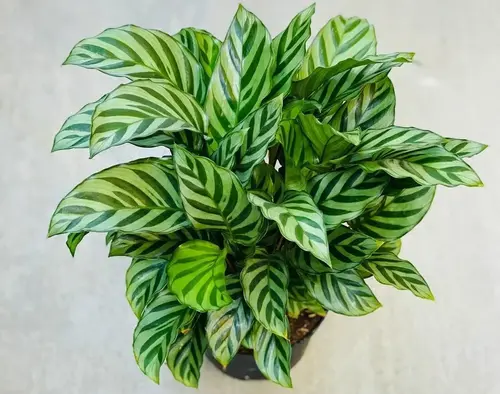
Temperature is another crucial factor when it comes to caring for Freddie. The desired temperature is from 65-85°F, which is pretty much room temperature. They can survive 75°F easily because their native land has a hot climate.
It can withstand temperatures under 60°F for a few days; then, it will start wilting.
Be Careful! Cold or hot drifts are hard for the Calathea Freddie to withstand; therefore, make sure it is not near any heating, air conditioning, or cold vents.

Watering Requirements for Zebra Plant
Calathea Freddie’s care requires a frequent watering routine. Freddy loves to grow in moist soil, so it’s tricky to keep the soil moist all the time without making it soggy. Good drainage soil will help to drain out excess water. Constantly check the soil dryness before watering it again.
The best way to check the soil’s moisture is to use a moisture meter. It has a scale on it, and it’s an easy way to know whether your soil is moist, wet, or dry. Furthermore, you can check manually by holding the soil in your hand. If it sticks together, it is moist, and if its crumbles and falls, it is dry. Water the Freddie plant according to the moisture check results.
Calathea Freddy can’t stand over watering nor too much drought. In summer, due to high temperatures, the soil will dry quickly compared to colder weather. You shall water the plant if the soil below the one-inch depth becomes dry. During the growing seasons of spring and summer, Calathea Freddie requires more water. Therefore, from spring to late summer, a watering routine of twice a week will work in most cases.
In Winter, the plant goes into a dormant period of plant growth. Water requirement decreases in this dormancy period. Watering after a week or ten days will be enough. Tap water contains chlorine and salts, affecting Calathea Freddy’s growth; therefore, use chemical-free water. Filter water or distilled water is a good option, but rainwater remains the best choice.

Calathea Freddie Soil Requirements
Soil plays a vital role as it should be precisely like the soil in their native homeland. The soil shall have these qualities:
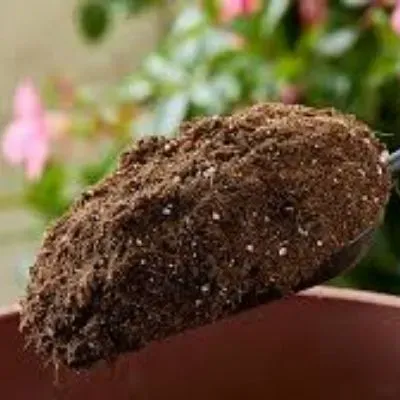
Well draining soil
An African violet mix is a ready-mix soil that can be bought easily from any gardening store. However, if you want to make your potting soil use the following constituents in recommended proportions:
Related Products
Products | Name | Check Price |
Organic Perlite for Plants | ||
WONDER SOIL Organic | ||
Orchid Potting Bark Mulch |

Fertilizing
Fertilizers boost growth and give the plant a greener, more vibrant look. You shall feed the Calathea Freddie once a month during the growing seasons of summer and spring. Don’t over-fertilize it; make a dilute solution, and apply after watering.
Signs of over-fertilization include the wilting and burning of the leaves. The salts and nutrients may gather over the soil’s surface and make it harder for water to pass through.
Signs of over-fertilization include the wilting and yellowing of the leaves. If you see salts layer on the topsoil, scrap it water the plant thoroughly. The excess salts will leave through the drain.

Repotting Zebra Plant
It is necessary to repot the Calathea Freddie because over the time the plant’s roots get tangled and make knots with each other. The plant becomes root bound in the pot, and there is no room for further growth of roots which results in stunted plant growth. Furthermore, the soil draining and moisture-retaining capabilities also get hampered because of extended roots. The repotting process provides more space for roots, and the plant grows happily.
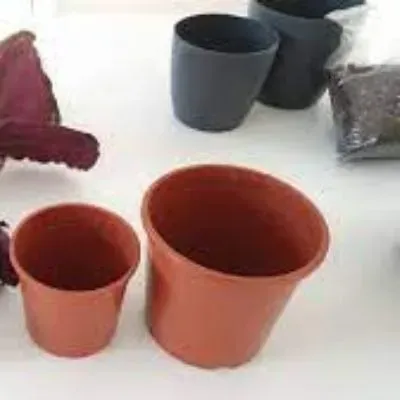
Repotting
Repotting is not a regular practice for Calathea Freddie, and you can repot it once in two years. During repotting, you remove the plant from the smaller existing pot and replant it in a bigger pot. Additionally, you can propagate your plant also during repotting.
Water the plant deeply a day before you plan to repot. Gently take out the roots along with soil out from the pot. If you face difficulty removing the plant, moist the soil with water for easy removal. Once the plant is out, please place it in a bigger pot in rich soil, ensuring the root ball is planted at the same depth as before.

Propagation of Calathea Freddie
You can propagate your healthy and flourishing Calathea Freddie while repotting. Please plan to propagate the plant in spring for optimum results. Division by rhizomes is the most successful method of propagation for Calathea Freddie.
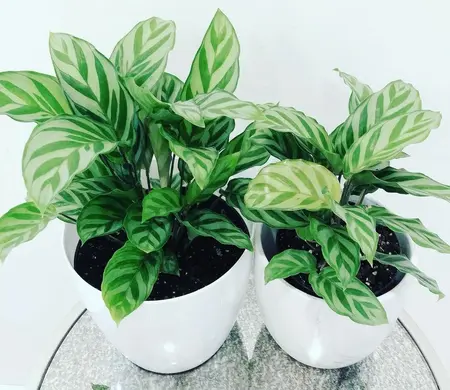
Here are a few steps which will help you to propagate easily.

Grooming and Pruning
Pruning of the plant is an exercise to remove dead or infected parts from the plant to rejuvenate the look or promote new growth. You do not have to prune the Calathea Freddie other than the occasional removal of sick or dead leaves. Pruning can also help control the disease, and cutting away sick leaves saves plant energy used to recover diseased parts.
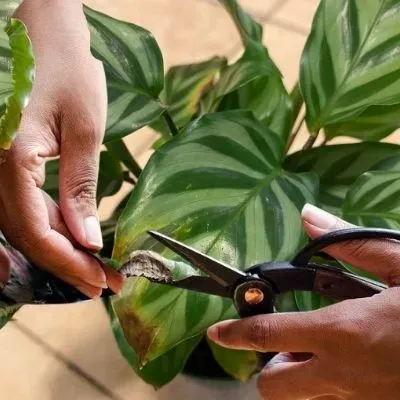
Removal of damaged leaves
Please do not forget to clean Freddie Plant’s leaves once a month. Use a soft, damp cloth to clean the leaves; it will help remove the dust and pests from the leaves and keep the plant happy and glooming.

Is the Calathea Freddie Toxic?
No Calathea Freddie is an entirely safe plant making it an outstanding houseplant to grow. The Calathea does not harm your pets and kids, and they can freely play in the near vicinity of the plant.

Pest, Diseases and Common Queries
Infestation that usually attack Freddy leaves are spider mites and aphids, which make colonies underside the leaves and feed on leaves by sucking the leaf sap. Please try to stop their invasion initially, they might affect the whole plant and transfer to the other indoor plants. If you notice the pests on your plant, immediately apply Neem oil on affected leaves or spray recommended pesticides for pests. A fungal attack usually causes leaf spots, and fungicidal spray will help control the disease.
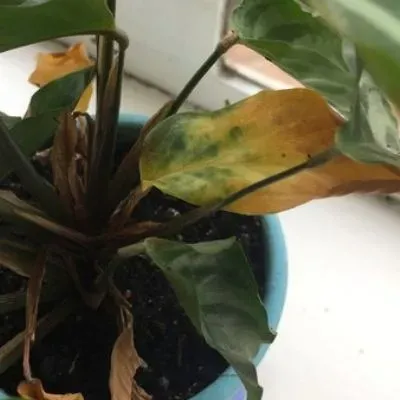
Yellowing and browning of leaves
Calathea Freddie mainly faces pest or diseases problem because of improper watering or extra water. If you feel your plant’s roots are affected by root rot, replace the plant in moist soil and trim the infected roots.

Common Queries
Is Calathea Freddie easy to care for?
Yes, Calathea Freddie is one of the easiest Calathea to keep and grow. The plant is not as picky about the climate as Calathea Rufibarba and some other family members. They can be grown outdoors under the shade; however, they cannot tolerate frost.
Is a Calathea Freddie a prayer plant?
Calathea Freddie, like other Calatheas, is not a prayer plant. Although its leaves respond to day and night by movement, many people mistakenly call them prayer plants. The actual prayer-plants also belong to the Maranta family, and they turn their leaves at night to the shape of praying hands which Calatheas don’t.
Where should I put my Calathea Freddie?
Calathea Freddy wishes to be placed in a bright area with indirect sunlight. They are native to rainforests, so they cannot tolerate direct sunlight. The delicate leaves start to burn, and the green foliage color starts disappearing in case of direct exposure to sunlight. In your home, the best place for the Calathea Freddie is in front of a window that faces east or west. North facing window can also be an excellent exposing place for this beauty.

